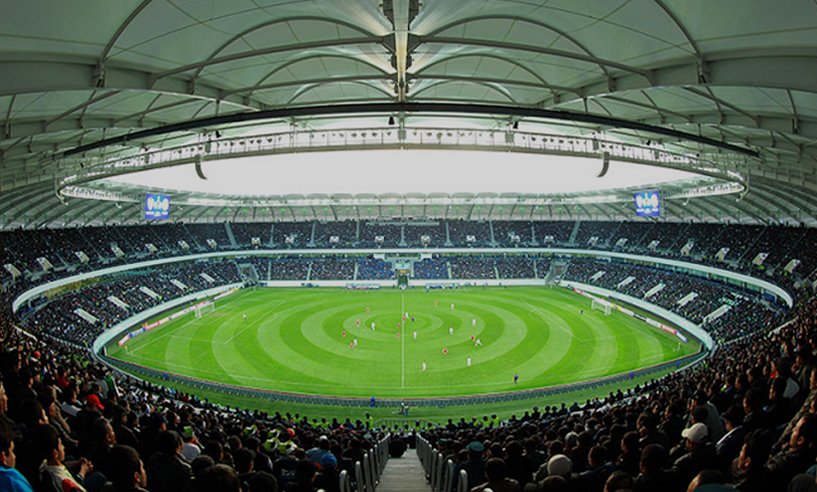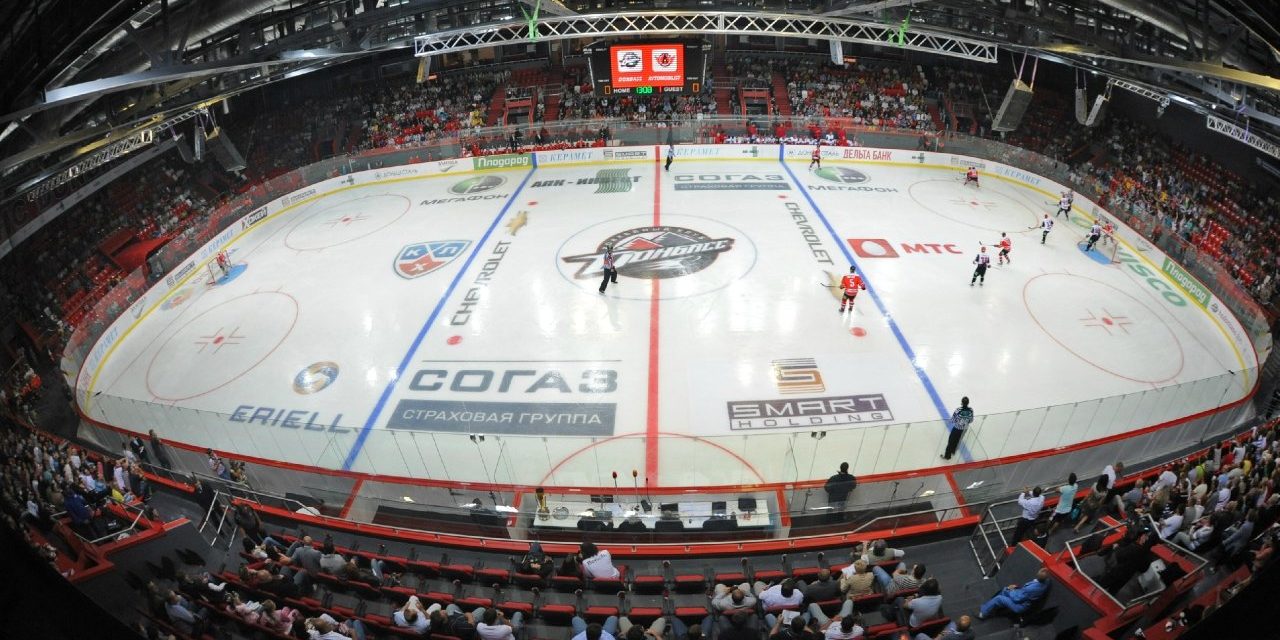In 2017, the Boris Alexandrov Sports Palace in Ust-Kamenogorsk (Kazakhstan) hosted the grand final of the Asian Volleyball Championship among women’s teams. The world’s most modern volleyball arena is currently equipped with technologies from ColosseoEAS, which invited the system integrator VisionHOUSE as a subcontractor.
The COLOSSEO Unified Media Platform integrates the world’s largest curved 4K indoor screen, a 3D projection system on the venue and other information display tools.
“The arena received a unified system for the spectacular display of media content thanks to the synchronization of the giant screen, media perimeter and projection system.”
- The world’s largest curved 4K screen for indoor environments
- Sports LED lighting in accordance with KHL requirements
- A unified automated system for generating, managing and broadcasting media content of the arena
- 3D ice show system consisting of 12 projector modules (3D video mapping)
- Video refereeing system in accordance with KHL requirements
- Universal system of timekeeping, statistics and accounting
- Multifunctional video replay system
- Solutions for capturing, processing and distributing media content
- Media perimeter
- Commissioning of the system, training of the customer’s personnel.
- The media complex is protected by a 24-month warranty.
The Palace of Sports. The Boris Alexandrov Ice Arena was built in 1968 in Ust-Kamenogorsk as an ice arena with 5200 seats. After the reconstruction in 2001, the number of seats was reduced to 4,400, and in the winter of 2012 the facade was reconstructed with a stylized goalkeeper’s helmet.
The sports complex is the home arena for the Torpedo hockey team, which until 2015 was known as Kazzinc-Torpedo. The arena hosts volleyball and ice hockey competitions and is currently the most modern volleyball court in the world with many innovative technological solutions.
“We thank ColosseoEAS for the opportunity to participate in the revolutionary project of creating a media complex for the Boris Alexandrov arena in Kazakhstan,” said Nikolay Zaluzhny, director of VisionHOUSE.
Technical details
Lighting equipment
The calculation of the sports lighting system for the ice arena using LED floodlights was carried out taking into account the requirements for TV broadcasts at ice arenas.
“The lighting equipment has been tested by television companies that film and broadcast sporting events,” comments Maxim Glazunov, Sales Director at ColosseoEAS IMC. “Vertical illumination is calculated in the direction of all cameras, while the ice gloss index is calculated using ice reflection coefficients taking into account the darkening effect of the sides of the venue to minimize shadows from the sides and glare from the ice.”
The lighting system provides 5 operating modes:
- Competitions with TV broadcast
- Competitions without TV broadcast
- Training
- Working lighting of the stands
- Technical.
All information display systems – giant concave screen, perimeter and projection system – are characterized by high performance (at half brightness for at least 100,000 hours), full automatic redundancy of video and data channels from the screen controller input (in the control room) to the screens, independent control of each LED cabinet from the main and backup channels in constant mode, and easy replacement of modules without removing screws (quick fix).
“The arena received a single system for efficient media content output due to the synchronization of the giant screen, perimeter and projection system,” said Maxim Glazunov.
The main media screen , 33.5 m wide and 3.6 m high, has a concave shape and a total area of 120 square meters with an 8 mm pixel pitch. Colosseo is proud to announce that at the time of installation, it was “the world’s largest 4K concave indoor screen”.
The solution features 16-bit color processing and a high refresh rate to ensure high-quality, flicker-free images for broadcasts, and can be switched on and off from the operator’s room, with monitoring and emergency shutdown functions in case of malfunctions. The screen operation monitoring system reports the temperature, voltage in the power supply, and notifies about the presence/absence of power. The signal is backed up via four independent lines.
The modular LED media meter with a protective mask on the screen is an injury-free solution with signal redundancy on two independent lines and a monitoring and emergency shutdown system in case of malfunctions.
The three-dimensional video projection system on the site provides 3D projection of specially prepared media content that covers the entire area of the 30x60m playing field. The 20,000 lumen projector modules are each equipped with remote control. The brackets for the projector modules are easy to set up and have mechanical position control for easy maintenance.
The video display is synchronized without visible gaps/seams as one large canvas (seamless image) with a total resolution of 5500 x 2000 pixels. The video projection follows the contours of the playground with rounded corners. The video mapping management system is integrated into the overall media management system of the arena complex.
The video refereeing system includes goal lights, commercial break lights, video goal systems in the field of view of the referees on the ice, referee and penalty box lights, equipment for displaying game time with audio alarms and 16 video refereeing cameras according to the KHL regulations at a frequency of 200 frames per second.
The solution is distinguished by the ability to connect databases with information about the league, teams, and players: team logos, photos, statistics, games, team personnel, etc.
The waterproof (IP65) cameras with digital zoom provide replay viewing and control. Integration with the timekeeping system, the ability to export the recording of controversial moments, export the video signal to the PTS, and perform synchronous replay from all cameras have been implemented. The solution archives all controversial moments from cameras, video replays viewed by the referee at the request of the Head Referee, and creates a file archive of the game after each match.
The statistics system provides protocol export for PTS, export of player data for content output, integration with statistics of other systems, and Unicode support.
Timekeeping devices display the game time of the match in the arena in a digital format, adjusted from the hardware and using information from the refereeing system with a clock error of no more than ± 1 second per day.
The video processing hardware is equipped with a full set of equipment for preparing the arena screen program, integrated with the system of timing, scoring, statistics and video refereeing and equipped with a mixing console. The main game information from the refereeing system is displayed on the screens in automatic mode. Of course, uninterrupted power supply of all equipment in the control room was taken into account.
Recording and processing video signals from cameras, the video goal system and external sources is transmitted for further processing, adaptation and display on media screens and various media content display devices (media screens, TVs, smartphones, etc.), records games in HD quality from internal arena cameras, the video goal system, TV broadcast cameras, and routes video signals from camera connection points to video processing system inputs. Switching of video signals, switching of new video signals is carried out through the video matrix. Implemented meta-information support for live broadcasting.
The eight-channel HD multifunctional replays system provides replays from all cameras connected to the system. Different types of repeats are created synchronously, with a specified duration – long, dynamic, limited by the time after the operator presses the button, repeat with adjustable start and end times (key points), repeats with super slow motion with a motion compensation algorithm. Repeats are labeled for quick search and playback, and synchronized with the content output system. The system creates catalogs of replays / best moments of the game with tags (home, away goal, change, shot, etc.), is equipped with a universal control console via touch screen and keyboard, supports DNxHD and ProRes.
The real-time media content creation system provides preparation for display on various panels (giant screen, media cube, perimeter, scoreboard, etc.), allows you to create animated graphics, videos, process video, organize playlists for gameplay and advertising, with subsequent real-time transfer of the finished content to the management system for display on media screens, is equipped with the function of viewing on media screens, and supports direct connection to social network feeds (Facebook, Twitter, etc.).
The system provides:
- Multilayer overlay on different types of content and video signals;
- Synthesis of all media (media screens, TVs, audio, lighting effects) with automation, scheduling and synchronization of media;
- Design tools that allow you to design the composition of objects;
- 3D visualization – the ability to see how the effects will look;
- Templates for scenes;
- Various effects are automatically generated without using processed video files;
- Video effects – animation and transitions;
- Create and display texts on the fly;
- Create animations using uploaded images, videos, and texts;
- A system for creating templates;
- Create different scenarios for goals, saves, timeouts, etc;
- Synchronous management of all media – displaying certain content on all media screens simultaneously;
- Ability to use inputs: live camera, offline audio/video files, pictures, XML data, web service information.
- The graphic engine allows you to create graphic designs for various media, adapted to each format (appropriate resolution, orientation, etc.
The arena camera system is designed to generate and broadcast an in-house TV program with sound. The set of equipment includes a mobile broadcast-grade camera SONY XDCAM PXW-X180 with a 1/3″ sensor and the ability to transmit a signal to a video processing system via 3G SDI / HD-SDI / SD-SDI interface. The camera is equipped with a Wi-Fi and LAN video streaming interface, a Miller tripod with a maximum height of 1760 mm and a head load of 2-5 kg, and all the necessary accessories.
Lumens robotic PTZ cameras with a 1/3″ sensor, 1080i, 720p and SD video output formats, and an interface for controlling lens positioning and camera parameters over IP networks were installed on the arena field. The cameras are equipped with sealed boxes for moisture and dust protection and can be operated in the temperature range from -25°C to +35°C. The robotic cameras are connected to a video processing system.
The solution for timing, scoring, and statistics from Colosseo provides the output of game time, statistics, and results to arena and PTS display systems, as well as manages refereeing equipment in accordance with the rules of sports competitions:
- Football (FIFA, UEFA)
- Ice hockey (IIHF, NHL, KHL, SZLH, CSLH)
- Basketball (FIBA, SBA)
- Handball (IHF, EHF)
- American football (IFAF, NFL)
- Tennis (ATP)
- Baseball (MLB)
- Futsal (FIFA/AMF)
- Water polo (FINA)
- Volleyball (FIVB, AVC)
- Ball hockey (ISBHF)
- Children’s hockey (IIHF)
- Lacrosse (FIL)
- Cycling track (UCI)
- Boxing (IBF)
- Short track
- Curling
- Figure skating
- Ice skating
2017
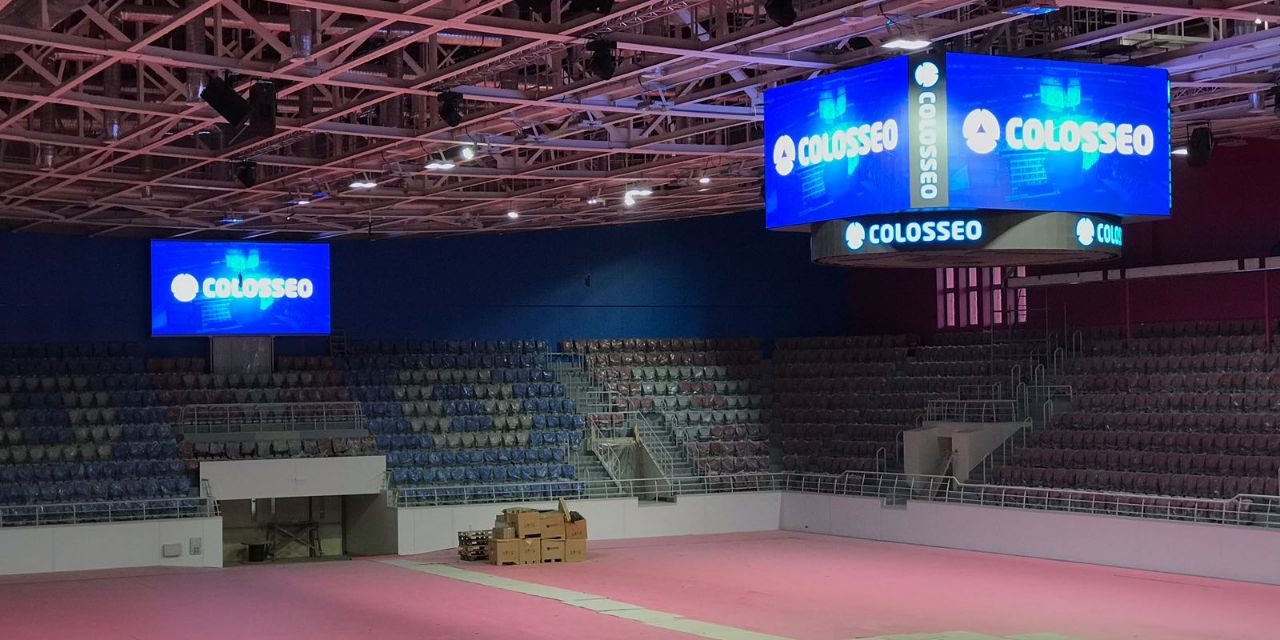


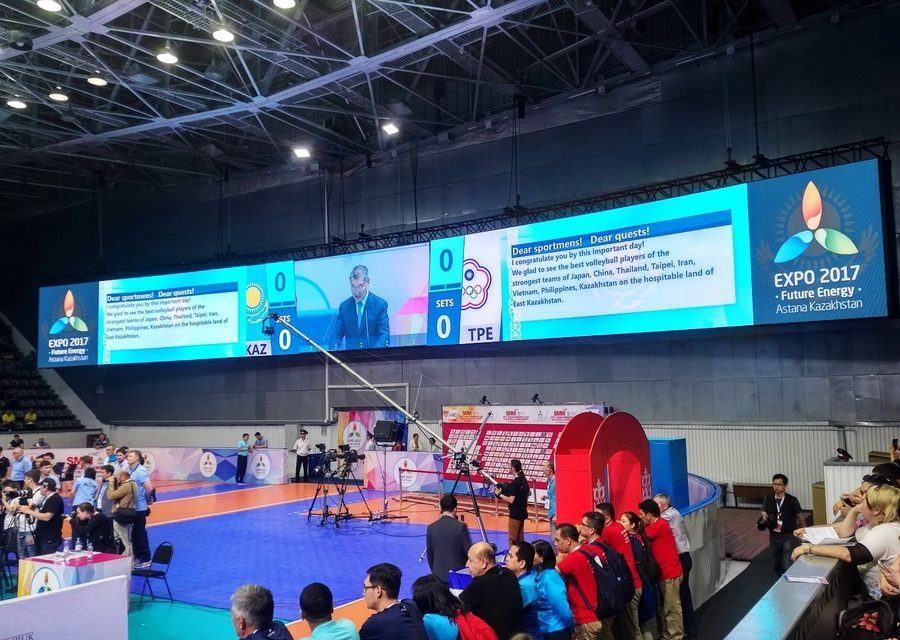
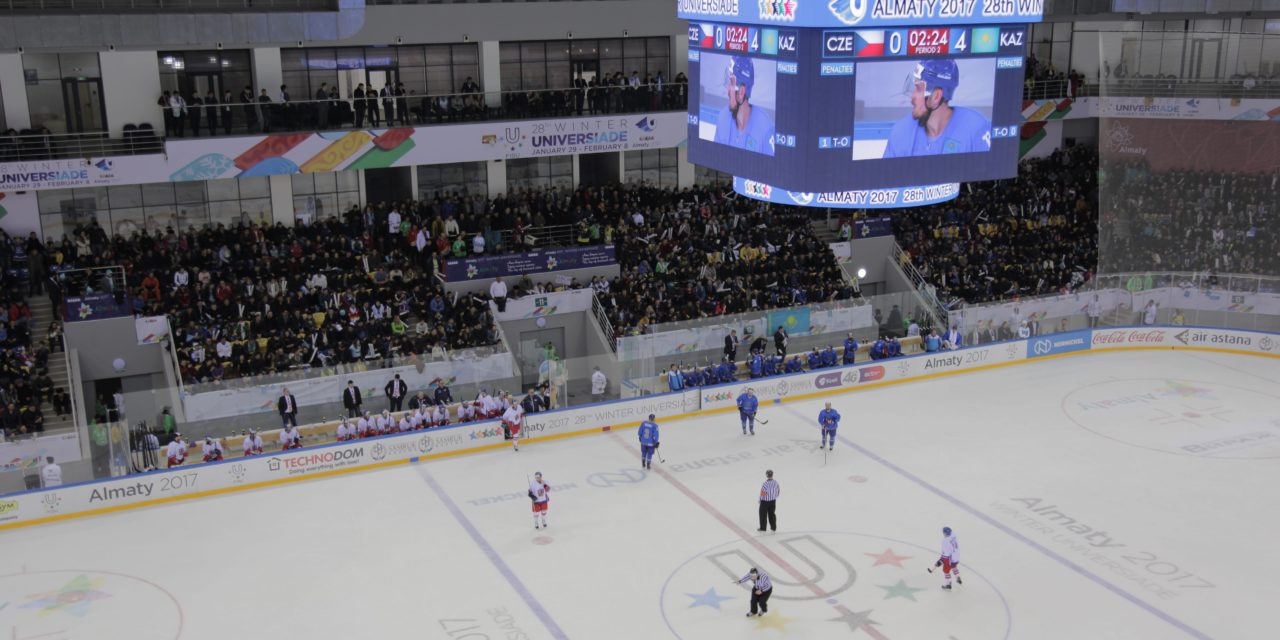
 The solution includes a unique video refereeing system for video analysis of disputed goal moments VideoGolSuddya in a new generation housing with updated goal cameras and wireless signal transmission, LED systems include a universal multi-sport timing and statistics console Timer Workstation, a game stop/resume device Timer Control, a sports clock with a countdown and an eight-channel video refereeing system according to the KHL standard Video Goal REPLAY Judge HD.
The solution includes a unique video refereeing system for video analysis of disputed goal moments VideoGolSuddya in a new generation housing with updated goal cameras and wireless signal transmission, LED systems include a universal multi-sport timing and statistics console Timer Workstation, a game stop/resume device Timer Control, a sports clock with a countdown and an eight-channel video refereeing system according to the KHL standard Video Goal REPLAY Judge HD.
